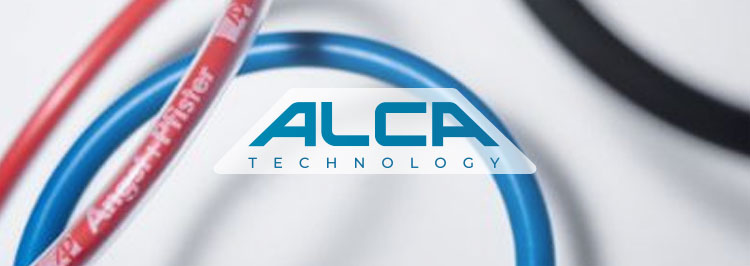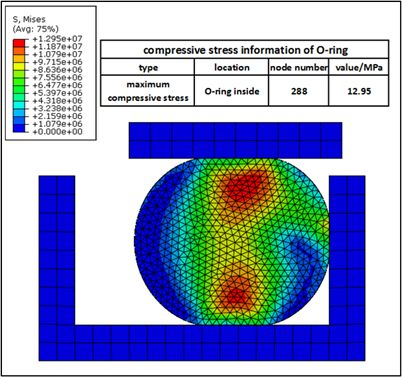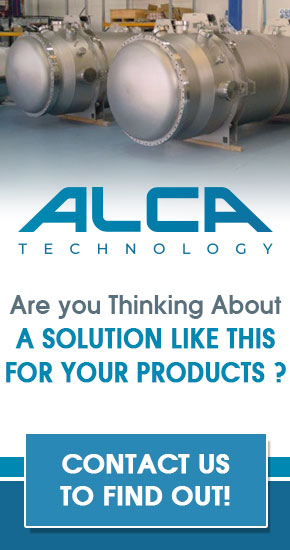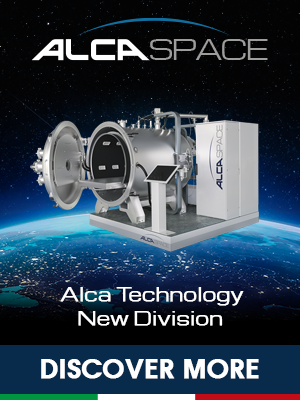O-rings in High Vacuum Systems

O-rings are fundamental elements of high vacuum systems. They are seals in elastomeric material, with a circular section, intended to be inserted in special seats, and to be compressed during use, acting as a sealing element.
O-rings (also called OR) are a very common form of gasket in technical applications, being used both in static and dynamic conditions, i.e. those in which at least one of the two surfaces with which the OR is in contact, is in movement.
In applications where it is necessary to make a seal for a fluid under pressure, if the OR is chosen appropriately and the seat in which it is housed is well sized and built, this type of gasket is able to guarantee the seal between two environments with a differential pressure that can even reach several hundred bars. But what is this ability based on?
The operating principle of an OR is based on the fact that the contact surface of the OR itself with the surfaces to be sealed is relatively small, thanks to the circular shape of the section of this type of gasket. This ensures that the contact pressure is high even in the presence of relatively modest preloads on the elastomeric element. As long as the pressure of the fluid acting on the OR does not exceed the contact pressure, there cannot be a leak.

Image taken from: Liao, B.; Sun, B.; Yan, M.; Ren, Y.; Zhang, W.; Zhou, K. Time-Variant Reliability Analysis for Rubber O-Ring Seal Considering Both Material Degradation and Random Load. Materials 2017, 10, 1211. https://doi.org/10.3390/ma10101211
Does all this also apply to the ORs used for high vacuum applications? The answer is no!
In the high vacuum technique, the maximum differential pressure between two environments is usually limited to 1 bar, so there is no need for high contact pressures between an OR and the surfaces of the parts to be sealed. In this case, in fact, another quantity comes into play, called conductance, which can be generically defined as the efficiency of a pipeline to support a gas flow. It is intuitive that a long (and narrow) pipe will have a lower conductance than a short pipe. Therefore, it is important that the OR has a contact surface with the surfaces of the groove in which it is housed as large as possible, naturally to the detriment of the contact pressure value, which is, in this case, a completely irrelevant quantity. There are therefore fundamental differences between the ORs - and the cavities - used in high pressure applications and in the vacuum technique, which can be summarized as follows:
- In high pressure applications, the OR must touch the contact surfaces in only two points: therefore, the groove must be made in such a way as to have sufficient width to handle the compression of the gasket, while maintaining this condition valid. In vacuum applications, on the other hand, the OR touches the contact surfaces in four points, that is, the three walls making up the seat, which is present on one of the components, plus the surface of the second component which constitutes the sealing system. This condition guarantees the lowest possible conductance and, therefore, the best working conditions of the system.
- In vacuum applications, the material constituting the OR has a lower hardness, so as to ensure a greater contact surface and therefore a lower conductance. In these cases, moreover, the choice of the material constituting the OR is generally not made on the basis of chemical compatibility, but of thermal compatibility: in fact, we remember that often the vacuum chambers can be heated to relatively high temperatures or heat-up as a consequence of the process carried out.
- On the other hand, it is important that the material constituting the ORs used in vacuum systems have very low outgassing values, so as not to become a source of problems themselves as regards the total gas load.
- In vacuum applications, it is particularly important that the surface finish possess the correct lay, which must follow the direction of the axis of the seat itself. Any other type of finish would in fact create “pipes” capable of increasing the conductance of the system, with consequent decay of the obtainable basic pressure values.
So here are some tips:
- If an OR in your vacuum chamber should be damaged, do not simply replace it with a component with the same diameter. It will likely not be able to deliver the desired performance.
- If the groove or the flange in which an OR is housed or rests is damaged, even by the presence of a single scratch, it must be repaired / restored. In fact, even very modest gas loads, generated by small leaks acting at a microscopic level, can significantly alter the value of the minimum pressure that can be reached by the system.
- The use of a high vacuum grease for the lubrication of an OR, in small quantities, can contribute to the sealing of the micro-channels present and therefore to the achievement of a better vacuum level. But be careful, it must be a specific grease for high vacuum, with very low vapor pressure!
Happy vacuum to everyone!


